Question:1
When a policeman instructs a driver to bring his vehicle for weighing – who is required to pay the weighing expenses if an irregular weight is found?
Category : Rules and Regulations
Question:2
Which of the following road sign prohibits making a left U-turn?
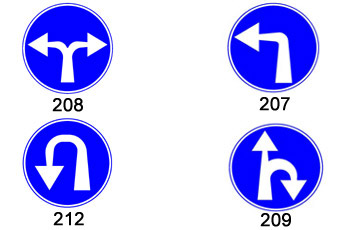
Category : Traffic Signs
Question:3
What is the legal definition of “lighting up time”
Category : Rules and Regulations
Question:4
How should a driver conduct himself after hitting a parked vehicle in the absence of its owners?
Category : Rules and Regulations
Question:5
On which type of road is a private passenger car permitted to drive at the speed of 110 k.p.?

Category : Rules and Regulations
Question:6
At what speed are we required to drive in reverse?
Category : Safety
Question:7
The law requires to install a third license plates in these types of vehicles:
Category : Rules and Regulations
Question:8
How should those involved in a road accident, which resulted in property damage only, conduct themselves?
Category : Rules and Regulations
Question:9
Is it permitted to drive an un-roadworthy vehicle?
Category : Rules and Regulations
Question:10
How should drivers conduct themselves while driving opposite one another in a narrow and flat road?
Category : Rules and Regulations
Question:11
What should you do when you are about to start driving after stopping or parking at the side of the roadway?

Category : Safety
Question:12
How can we reduce air pollution caused by the vehicle’s gas emissions?
Category : Know Your Vehicle
Question:13
When we want to verify that the vehicle’s tire air pressure is correct:
Category : Know Your Vehicle
Question:14
When is it permitted to overtake, in one go, two vehicle that are driving before you on your lane
Category : Rules and Regulations
Question:15
Which of the following road signs indicates a pedestrian crossing?
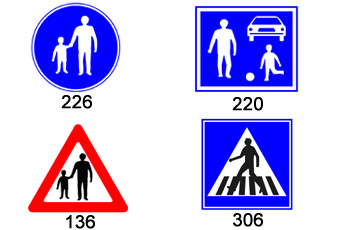
Category : Traffic Signs
Question:16
What is the marked vehicle required to do when the following marking appears on the road?
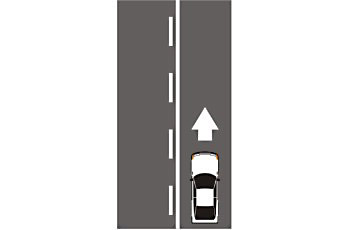
Category : Traffic Signs
Question:17
Upon completion of the two year “new driver” period, a regular driver’s license will not be given to a “new driver” who was convicted of:

Category : Rules and Regulations
Question:18
You are driving vehicle no. 3 before an intersection without traffic signs. According to the rules of giving right of way, who should enter the intersection first?
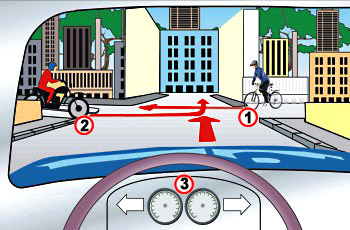
Category : Rules and Regulations
Question:19
You are driving vehicle no.3. to whom will you give the right of way?
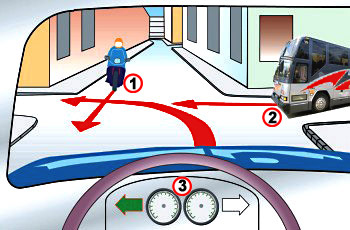
Category : Rules and Regulations
Question:20
Before you is traffic sign 126. Which traffic sign should be placed in the road with which you are about to merge?
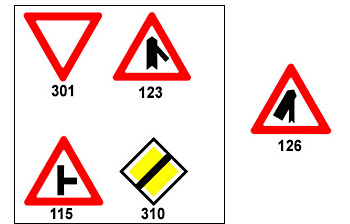
Category : Traffic Signs
Question:21
Why is it required to drive in low gear on a steep descent?
Category : Safety
Question:22
Is it specified by the following road sign which rules for giving right-of-way should be applied?
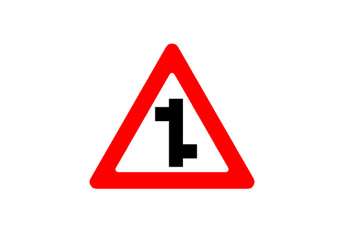
Category : Traffic Signs
Question:23
When a driver’s blood alcohol concentration exceeds lawful levels, will he be regarded as a drunk driver?
Category : Rules and Regulations
Question:24
What are you required to do according to the following road sign?

Category : Traffic Signs
Question:25
What is “all up weight”?
Category : Rules and Regulations
Question:26
In a roadway having at least two lanes in the same direction of driving, which of the following vehicles must enter an intersection from the right of the two lanes?
Category : Rules and Regulations
Question:27
While driving during “lighting up time” in a vehicle with an overall width of 220 cm, is it obligatory to turn-on the “Extremity“ side lights?
Category : Rules and Regulations
Question:28
What is the meaning of the following road marking (a continuous separation line)?

Category : Traffic Signs
Question:29
What vehicle features should be adjusted in order to ensure a comfortable and safe sitting position?
Category : Safety
Question:30
What sign warns drivers about an approaching tunnel?
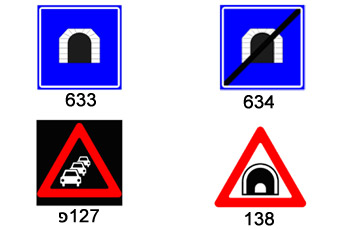
Category : Traffic Signs

